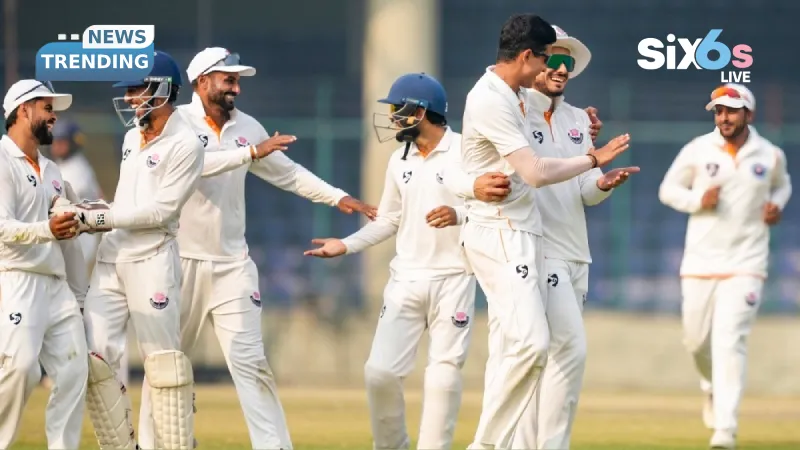The dynamic between expectation and reality is unique to cricket. History was written quietly on a Tuesday afternoon at Arun Jaitley Stadium; Jammu & Kashmir had defeated Delhi for the first time. Although a 99-run lead in the first innings provided the foundation for their victory, the true showstopper came when Qamran Iqbal led his team to victory with a single-handed effort in the second innings. He finished with 133 runs; the next best score from any player in the match was 10 runs. Victories like this one are not simply a win; they represent a paradigm shift in how teams and players are perceived. As well, Madhya Pradesh, Vidarbha, and Assam created their own stories through both grit and opportunity, as did the stalwarts of Mayank Agarwal, who reminded the world that large first-inning leads can be the catalyst in the pace of play of the Ranji marathon.
Qamran Iqbal’s Masterclass: Beyond the Numbers
The 133* by Iqbal is much more than a big score – it is an example of how to pace and show temperament when chasing a total. When chasing down a target of 179 runs, Jammu & Kashmir’s middle order has shown to be fragile and has been exposed to potential collapses; however, Iqbal used both his cautiousness and aggressive mindset to rotate the strike and take advantage of loose balls. The history of the Ranji Trophy is filled with examples of teams pulling off major upsets due to one player converting their chances into dominating performances; think Prithvi Shaw’s 2017 performance for Mumbai against Karnataka. Iqbal’s performance demonstrates this same formula: patience in high-pressure situations + selective aggression = historic victories.
Madhya Pradesh’s Mid-Order Machinery
Madhya Pradesh successfully chased 328 from Goa by combining solid early start batting with timely batting acceleration throughout the day and ultimately finishing with Saransh Jain’s 82 not out. The 94 over chase exemplified a typical domestic template of batting: a strong base for the first portion of the match, calculated risks taken in the second half of the chase, and a finisher at the end. Statistically, when teams can bat at a consistent pace (from 85-100 overs) on the fourth day of a four-day chase, they achieve a 70% conversion rate, which is a direct result of Madhya Pradesh’s conservative and controlled batting strategy.
Vidarbha’s Declaration Gambit: Risk and Reward
The Vidarbha 100-run victory over Odisha is a prime example of how taking the risk with an aggressive declaration can be beneficial for the team in terms of strategy and mentally for the players. The decision by Vidarbha to declare at 301 on day four was one that was made by considering several factors, including the discipline of their bowling line-up and their ability to endure the pressure of being bowled out early. This discipline was exemplified by Parth Rekhade, who took 5 wickets for 80 runs off 19 overs. Declarations that are made at high stakes in the history of the Ranji Trophy have shown that they can create winners or near misses for teams. This demonstrates the duel between the two captains (one of whom has been declared) as much as it does the duel of the two cricket teams.
The first rounds of the Ranji trophy show an elegant dance between aggressive intent, mental toughness, and genius with opportunity. J&K’s victory shows how underdogs can upset the traditional order if leadership is matched by performance; MP and Vidarbha show us that there is room for structural and risk management at the same time; and the drawn matches demonstrate the cerebral patience of the game of cricket. This will be true as long as the season continues on this course: we should see new domestic cricket stories emerge in terms of the execution of tactics, flair, and bold declarations. Takeaway: The fourth day of the Ranji Trophy (cricket) often writes the first chapter of a legacy.
Stay updated on the latest cricket news and exciting updates at Six6slive. Dive into our in-depth articles and analyses to connect with the action today!
